Premium Only Content
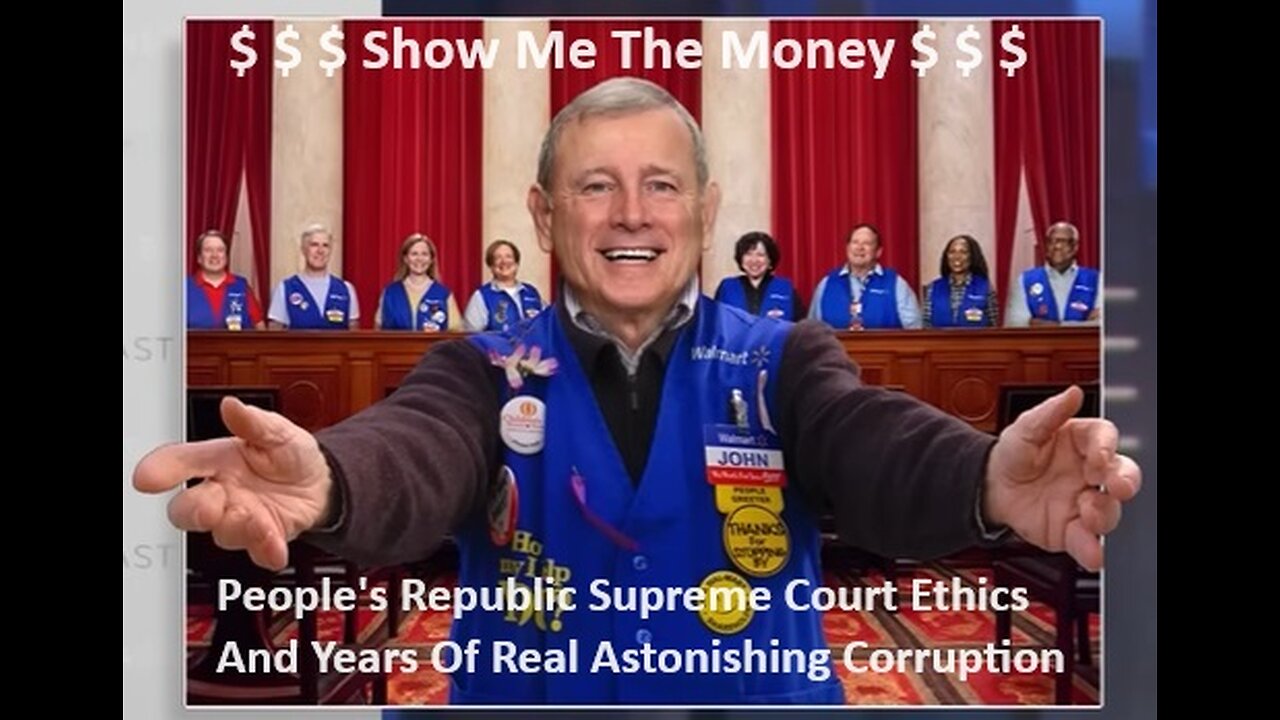
People's Republic Of Supreme Court Ethics And Years Of Astonishing Corruption
The Supreme Court of the United States has adopted a code of conduct to guide the conduct of the members of the court, following reports of undisclosed property deals and gifts. The code aims to avoid the appearance of impropriety in all activities and should not allow family, social, political financial or other relationships to influence official conduct or judgment. However, the code's enforcement is still unclear, and the court is still studying how it will be put into effect. The Brennan Center argues that the new rules are more loopholes than law and are designed to fail. The Justices will continue to rely on the Office of Legal Counsel for recurring ethics and financial disclosure issues, but there is no mention of how any violations will be enforced. John Oliver discusses the Supreme Court, the ethically questionable gifts some of the justices receive, and an offer for Clarence Thomas that could ruin John’s life. Genuinely. You’ll see.
The Supreme Court adopts first-ever code of ethics The U.S. Supreme Court Monday adopted its first-ever ethics code, bowing to pressure from Congress and the public. All nine justices signed onto the new code, which was instantly criticized for lack of an enforcement mechanism.
In an unsigned statement, the justices said though there has been no formal code, they have long abided by certain standards.
"The absence of a Code, however, has led in recent years to the misunderstanding that the Justices of this Court, unlike all other jurists in this country, regard themselves as unrestricted by any ethics rules," they wrote. "To dispel this misunderstanding, we are issuing this Code, which largely represents a codification of principles that we have long regarded as governing our conduct."
Public trust in the court has fallen amid revelations that Justice Clarence Thomas received gifts and travel from Harlan Crow, a Republican donor. Justice Samuel Alito has also been criticized for failing to disclose a fishing trip with Paul Singer, a big Republican donor with cases before the Supreme Court.
In recent weeks, Justices Amy Coney Barrett and Elena Kagan publicly supported calls for an ethics code.
What does the code say?
With the release of the code Monday, the court is trying to be somewhat specific about what justices can and cannot do. But, there is a lot they can do and no enforcement mechanism as to what they are supposed not to do.
For example, the code is quite specific about financial transactions: Justices can make a real estate transaction, as long as it's not before the court. But the code simply reaffirms the commitment to the disclosure provisions that are in the existing code for all federal judges.
The code is also specific about recusal if family members, such as spouses, children or grandchildren, have a case before the court or is a lawyer before the court.
But the code also makes exceptions for justices that may not apply to lower court judges. For instance, a justice doesn't have to recuse if his or her relative files a friend of the court brief because the court receives so many of these briefs, sometimes over 100 in a single case, and it has loosened the rules on these briefs being filed.
In recent months, critics have raised concerns about Justice Thomas' wife, Virginia Thomas, and her activities to promote political causes that end up before the court. The code says that if a spouse or child living with the justice has a substantial interest in the outcome of a case — financial or any other interest — the justice is supposed to recuse. That would have meant, for example, that Justice Thomas would have to recuse in cases in which his wife has played a major role. Last year, Thomas did not recuse, and was the sole dissenter, in a case about whether former President Trump's White House records had to be turned over to the House committee investigating the Jan. 6 riot at the U.S. Capitol, despite Ginni Thomas' texts to then-White House Chief of Staff Mark Meadows urging him to take steps to overturn the 2020 presidential election results.
Others have raised concerns about Justice Sonia Sotomayor's use of court staff in setting up her schedule and trips including her book tour. Now, the court's new code says that for security reasons, justices are permitted to use their office resources in making plans. And, the code even specifies that a justice may appear at events where their books are being sold.
What have the court's critics said about the ethics code?
Critics remain unsatisfied, particularly with the code's lack of enforcement provision.
Progressive group Take Back the Court said in a statement, "With 53 uses of the word 'should' and only 6 of the word 'must,' the court's new 'code of ethics' reads a lot more like a friendly suggestion than a binding, enforceable guideline." Another group, United for Democracy, said, "While it's great to see the Supreme Court finally respond to public pressure and acknowledge that they have serious ethics and corruption issues that must be addressed, the code of ethics announced today is woefully inadequate."
Meanwhile, NYU School of Law professor Stephen Gillers called the code "pretty decent." "It is more detailed than I expected," Gillers said, even though there is "no enforcement" mechanism.
Supreme Court Ethics Code Backfires Immediately The U.S. Supreme Court announced on Monday that it was introducing a new code of conduct for justices amid ongoing calls to implement an ethics code, prompting criticism on social media.
"The undersigned Justices are promulgating this Code of Conduct to set out succinctly and gather in one place the ethics rules and principles that guide the conduct of the Members of the Court. For the most part these rules and principles are not new," the court said in a statement.
"The absence of a Code, however, has led in recent years to the misunderstanding that the Justices of this Court, unlike all other jurists in this country, regard themselves as unrestricted by any ethics rules. To dispel this misunderstanding, we are issuing this Code, which largely represents a codification of principles that we have long regarded as governing our conduct."
In recent months, some Americans have urged the court to adopt a code of ethics following reports that Justices Clarence Thomas and Samuel Alito received gifts and trips from billionaires. ProPublica published a report in August detailing that Thomas received several trips and traveled aboard the private jet owned by billionaire Republican donor Harlan Crow.
The MoveOn organization created a petition this year calling for the court to adopt a "clear and enforceable code of ethics."
The Supreme Court Code of Conduct released on Monday includes several canons, such as "a Justice should uphold the integrity and independence of the judiciary," "A Justice should avoid impropriety and the appearance of impropriety in all activities," and "A Justice may engage in extrajudicial activities that are consistent with the obligations of the Judicial Office."
"Nothing in the 14-page document, or the one-page cover note, addresses the elephant in the room: *Whatever* rules the justices *say* they are bound to follow, *who* is going to enforce those rules—and how?" Stephen I. Vladeck, the Charles Alan Wright chair in federal courts at the University of Texas School of Law, wrote on X, formerly Twitter.
Former U.S. Attorney Harry Litman responded to the post from Vladeck and said, "I think the answer is clear from the silence..."
Other social media users also mocked the code of conduct, such as law professor Anthony Michael Kreis, who wrote on X: "A Code of Conduct with no meaningful enforcement mechanism is a mere gesture."
X user Jamison Foser wrote: "The word 'must' appears 6 times in the Supreme Court's new ethics code. The word 'should' appears 53 times."
The X account for the No Lie with Brian Tyler Cohen podcast wrote: "The Supreme Court just announced an arbitrary "ethics code" for justices. They didn't explain how it would work, who would enforce it, and it doesn't include financial disclosures. The effort is a PR attempt to save face."
Newsweek reached out to the U.S. Supreme Court via email for comment.
https://www.supremecourt.gov/about/members_text.aspx
Ruth Bader Ginsburg, Associate Justice,
was born in Brooklyn, New York, March 15, 1933. She married Martin D. Ginsburg in 1954, and has a daughter, Jane, and a son, James. She received her B.A. from Cornell University, attended Harvard Law School, and received her LL.B. from Columbia Law School. She served as a law clerk to the Honorable Edmund L. Palmieri, Judge of the United States District Court for the Southern District of New York, from 1959–1961. From 1961–1963, she was a research associate and then associate director of the Columbia Law School Project on International Procedure. She was a Professor of Law at Rutgers University School of Law from 1963–1972, and Columbia Law School from 1972–1980, and a fellow at the Center for Advanced Study in the Behavioral Sciences in Stanford, California from 1977–1978. In 1971, she co-founded the Women’s Rights Project of the American Civil Liberties Union, and served as the ACLU’s General Counsel from 1973–1980, and on the National Board of Directors from 1974–1980. She served on the Board and Executive Committee of the American Bar Foundation from 1979-1989, on the Board of Editors of the American Bar Association Journal from 1972-1978, and on the Council of the American Law Institute from 1978-1993. She was appointed a Judge of the United States Court of Appeals for the District of Columbia Circuit in 1980. President Clinton nominated her as an Associate Justice of the Supreme Court, and she took her seat August 10, 1993. Justice Ginsburg died on September 18, 2020.
John G. Roberts, Jr., Chief Justice of the United States,
was born in Buffalo, New York, January 27, 1955. He married Jane Sullivan in 1996 and they have two children - Josephine and Jack. He received an A.B. from Harvard College in 1976 and a J.D. from Harvard Law School in 1979. He served as a law clerk for Judge Henry J. Friendly of the United States Court of Appeals for the Second Circuit from 1979–1980, and as a law clerk for then-Associate Justice William H. Rehnquist of the Supreme Court of the United States during the 1980 Term. He served as a Special Assistant to the Attorney General of the United States from 1981–1982, Associate Counsel to President Ronald Reagan, White House Counsel’s Office from 1982–1986, and as Principal Deputy Solicitor General from 1989–1993. From 1986–1989 and 1993–2003, he practiced law in Washington, D.C. He served as a Judge on the Court of Appeals for the District of Columbia Circuit from 2003–2005. Nominated as Chief Justice of the United States by President George W. Bush, he assumed that office on September 29, 2005.
Clarence Thomas, Associate Justice,
was born in the Pinpoint community near Savannah, Georgia on June 23, 1948. He attended Conception Seminary from 1967-1968 and received an A.B., cum laude, from College of the Holy Cross in 1971 and a J.D. from Yale Law School in 1974. He was admitted to law practice in Missouri in 1974, and served as an Assistant Attorney General of Missouri, 1974-1977; an attorney with the Monsanto Company, 1977-1979; and Legislative Assistant to Senator John Danforth, 1979-1981. From 1981–1982 he served as Assistant Secretary for Civil Rights, U.S. Department of Education, and as Chairman of the U.S. Equal Employment Opportunity Commission, 1982-1990. From 1990–1991, he served as a Judge on the United States Court of Appeals for the District of Columbia Circuit. President Bush nominated him as an Associate Justice of the Supreme Court and he took his seat October 23, 1991. He married Virginia Lamp on May 30, 1987 and has one child, Jamal Adeen by a previous marriage.
Samuel A. Alito, Jr., Associate Justice,
was born in Trenton, New Jersey, on April 1, 1950. He married Martha-Ann Bomgardner in 1985, and has two children - Philip and Laura. He served as a law clerk for Leonard I. Garth of the United States Court of Appeals for the Third Circuit from 1976–1977. He served as an Assistant U.S. Attorney, District of New Jersey, 1977–1981, as Assistant to the Solicitor General, U.S. Department of Justice, 1981–1985, as Deputy Assistant Attorney General, U.S. Department of Justice, 1985–1987, and as U.S. Attorney, District of New Jersey, 1987–1990. He was appointed to the United States Court of Appeals for the Third Circuit in 1990. President George W. Bush nominated him as an Associate Justice of the Supreme Court, and he took his seat January 31, 2006.
Sonia Sotomayor, Associate Justice,
was born in Bronx, New York, on June 25, 1954. She earned a B.A. in 1976 from Princeton University, graduating summa cum laude and a member of Phi Beta Kappa and receiving the Pyne Prize, the highest academic honor Princeton awards to an undergraduate. In 1979, she earned a J.D. from Yale Law School where she served as an editor of the Yale Law Journal. She served as Assistant District Attorney in the New York County District Attorney’s Office from 1979–1984. She then litigated international commercial matters in New York City at Pavia & Harcourt, where she served as an associate and then partner from 1984–1992. In 1991, President George H.W. Bush nominated her to the U.S. District Court, Southern District of New York, and she served in that role from 1992–1998. In 1997, she was nominated by President Bill Clinton to the U.S. Court of Appeals for the Second Circuit where she served from 1998–2009. President Barack Obama nominated her as an Associate Justice of the Supreme Court on May 26, 2009, and she assumed this role August 8, 2009.
Elena Kagan, Associate Justice,
was born in New York, New York, on April 28, 1960. She received an A.B. from Princeton in 1981, an M. Phil. from Oxford in 1983, and a J.D. from Harvard Law School in 1986. She clerked for Judge Abner Mikva of the U.S. Court of Appeals for the D.C. Circuit from 1986-1987 and for Justice Thurgood Marshall of the U.S. Supreme Court during the 1987 Term. After briefly practicing law at a Washington, D.C. law firm, she became a law professor, first at the University of Chicago Law School and later at Harvard Law School. She also served for four years in the Clinton Administration, as Associate Counsel to the President and then as Deputy Assistant to the President for Domestic Policy. Between 2003 and 2009, she served as the Dean of Harvard Law School. In 2009, President Obama nominated her as the Solicitor General of the United States. A year later, the President nominated her as an Associate Justice of the Supreme Court on May 10, 2010. She took her seat on August 7, 2010.
Neil M. Gorsuch, Associate Justice,
was born in Denver, Colorado, August 29, 1967. He and his wife Louise have two daughters. He received a B.A. from Columbia University, a J.D. from Harvard Law School, and a D.Phil. from Oxford University. He served as a law clerk to Judge David B. Sentelle of the United States Court of Appeals for the District of Columbia Circuit, and as a law clerk to Justice Byron White and Justice Anthony M. Kennedy of the Supreme Court of the United States. From 1995–2005, he was in private practice, and from 2005–2006 he was Principal Deputy Associate Attorney General at the U.S. Department of Justice. He was appointed to the United States Court of Appeals for the Tenth Circuit in 2006. He served on the Standing Committee on Rules for Practice and Procedure of the U.S. Judicial Conference, and as chairman of the Advisory Committee on Rules of Appellate Procedure. He taught at the University of Colorado Law School. President Donald J. Trump nominated him as an Associate Justice of the Supreme Court, and he took his seat on April 10, 2017.
Brett M. Kavanaugh, Associate Justice,
was born in Washington, D.C., on February 12, 1965. He married Ashley Estes in 2004, and they have two daughters - Margaret and Liza. He received a B.A. from Yale College in 1987 and a J.D. from Yale Law School in 1990. He served as a law clerk for Judge Walter Stapleton of the U.S. Court of Appeals for the Third Circuit from 1990-1991, for Judge Alex Kozinski of the U.S. Court of Appeals for the Ninth Circuit from 1991-1992, and for Justice Anthony M. Kennedy of the U.S. Supreme Court during the 1993 Term. In 1992-1993, he was an attorney in the Office of the Solicitor General of the United States. From 1994 to 1997 and for a period in 1998, he was Associate Counsel in the Office of Independent Counsel. He was a partner at a Washington, D.C., law firm from 1997 to 1998 and again from 1999 to 2001. From 2001 to 2003, he was Associate Counsel and then Senior Associate Counsel to President George W. Bush. From 2003 to 2006, he was Assistant to the President and Staff Secretary for President Bush. He was appointed a Judge of the United States Court of Appeals for the District of Columbia Circuit in 2006. President Donald J. Trump nominated him as an Associate Justice of the Supreme Court, and he took his seat on October 6, 2018.
Amy Coney Barrett, Associate Justice,
was born in New Orleans, Louisiana, on January 28, 1972. She married Jesse M. Barrett in 1999, and they have seven children - Emma, Vivian, Tess, John Peter, Liam, Juliet, and Benjamin. She received a B.A. from Rhodes College in 1994 and a J.D. from Notre Dame Law School in 1997. She served as a law clerk for Judge Laurence H. Silberman of the U.S. Court of Appeals for the D.C. Circuit from 1997 to 1998, and for Justice Antonin Scalia of the Supreme Court of the United States during the 1998 Term. After two years in private law practice in Washington, D.C., she became a law professor, joining the faculty of Notre Dame Law School in 2002. She was appointed a Judge of the United States Court of Appeals for the Seventh Circuit in 2017. President Donald J. Trump nominated her as an Associate Justice of the Supreme Court, and she took her seat on October 27, 2020.
Ketanji Brown Jackson, Associate Justice,
was born in Washington, D.C., on September 14, 1970. She married Patrick Jackson in 1996, and they have two daughters. She received an A.B., magna cum laude, from Harvard-Radcliffe College in 1992, and a J.D., cum laude, from Harvard Law School in 1996. She served as a law clerk for Judge Patti B. Saris of the U.S. District Court for the District of Massachusetts from 1996 to 1997, Judge Bruce M. Selya of the U.S. Court of Appeals for the First Circuit from 1997 to 1998, and Justice Stephen G. Breyer of the Supreme Court of the United States during the 1999 Term. After three years in private practice, she worked as an attorney at the U.S. Sentencing Commission from 2003 to 2005. From 2005 to 2007, she served as an assistant federal public defender in Washington, D.C., and from 2007 to 2010, she was in private practice. She served as a Vice Chair and Commissioner on the U.S. Sentencing Commission from 2010 to 2014. In 2012, President Barack Obama nominated her to the U.S. District Court for the District of Columbia, where she served from 2013 to 2021. She was appointed to the Defender Services Committee of the Judicial Conference of the United States in 2017, and the Supreme Court Fellows Commission in 2019. President Joseph R. Biden, Jr., appointed her to the United States Court of Appeals for the District of Columbia Circuit in 2021 and then nominated her as an Associate Justice of the Supreme Court in 2022. She took her seat on June 30, 2022.
Anthony M. Kennedy (Retired), Associate Justice,
was born in Sacramento, California, July 23, 1936. He married Mary Davis and has three children. He received his B.A. from Stanford University and the London School of Economics, and his LL.B. from Harvard Law School. He was in private practice in San Francisco, California from 1961–1963, as well as in Sacramento, California from 1963–1975. From 1965 to 1988, he was a Professor of Constitutional Law at the McGeorge School of Law, University of the Pacific. He has served in numerous positions during his career, including a member of the California Army National Guard in 1961, the board of the Federal Judicial Center from 1987–1988, and two committees of the Judicial Conference of the United States: the Advisory Panel on Financial Disclosure Reports and Judicial Activities, subsequently renamed the Advisory Committee on Codes of Conduct, from 1979–1987, and the Committee on Pacific Territories from 1979–1990, which he chaired from 1982–1990. He was appointed to the United States Court of Appeals for the Ninth Circuit in 1975. President Reagan nominated him as an Associate Justice of the Supreme Court, and he took his seat February 18, 1988. Justice Kennedy retired from the Supreme Court on July 31, 2018.
David H. Souter (Retired), Associate Justice,
was born in Melrose, Massachusetts, September 17, 1939. He graduated from Harvard College, from which he received his A.B. After two years as a Rhodes Scholar at Magdalen College, Oxford, he received an A.B. in Jurisprudence from Oxford University and an M.A. in 1963. After receiving an LL.B. from Harvard Law School, he was an associate at Orr and Reno in Concord, New Hampshire from 1966 to 1968, when he became an Assistant Attorney General of New Hampshire. In 1971, he became Deputy Attorney General and in 1976, Attorney General of New Hampshire. In 1978, he was named an Associate Justice of the Superior Court of New Hampshire, and was appointed to the Supreme Court of New Hampshire as an Associate Justice in 1983. He became a Judge of the United States Court of Appeals for the First Circuit on May 25, 1990. President Bush nominated him as an Associate Justice of the Supreme Court, and he took his seat October 9, 1990. Justice Souter retired from the Supreme Court on June 29, 2009.
Stephen G. Breyer (Retired), Associate Justice,
was born in San Francisco, California, August 15, 1938. He married Joanna Hare in 1967, and has three children - Chloe, Nell, and Michael. He received an A.B. from Stanford University, a B.A. from Magdalen College, Oxford, and an LL.B. from Harvard Law School. He served as a law clerk to Justice Arthur Goldberg of the Supreme Court of the United States during the 1964 Term, as a Special Assistant to the Assistant U.S. Attorney General for Antitrust, 1965–1967, as an Assistant Special Prosecutor of the Watergate Special Prosecution Force, 1973, as Special Counsel of the U.S. Senate Judiciary Committee, 1974–1975, and as Chief Counsel of the committee, 1979–1980. He was an Assistant Professor, Professor of Law, and Lecturer at Harvard Law School, 1967–1994, a Professor at the Harvard University Kennedy School of Government, 1977–1980, and a Visiting Professor at the College of Law, Sydney, Australia and at the University of Rome. From 1980–1990, he served as a Judge of the United States Court of Appeals for the First Circuit, and as its Chief Judge, 1990–1994. He also served as a member of the Judicial Conference of the United States, 1990–1994, and of the United States Sentencing Commission, 1985–1989. President Clinton nominated him as an Associate Justice of the Supreme Court, and he took his seat August 3, 1994. Justice Breyer retired from the Supreme Court on June 30, 2022.
The real reason for the Supreme Court’s corruption crisis Who watches the philosopher kings with lifetime appointments?
The Supreme Court has run out of excuses.
Earlier this month, after ProPublica revealed that Justice Clarence Thomas frequently takes lavish vacations funded by billionaire Republican donor Harlan Crow, Thomas attempted to defend himself by claiming that this sort of “personal hospitality from close personal friends” is fine because Crow “did not have business before the court.”
As it turns out, that’s not true. As Bloomberg reports, the Supreme Court — including Justice Thomas — did briefly consider a $25 million copyright dispute involving a company that Crow was a partial owner of in 2005. At that point, Crow had already given a number of gifts to Thomas, including a $19,000 Bible that once belonged to Frederick Douglass.
As ProPublica later revealed, Crow even paid for the private school education of Thomas’s grandnephew, who Thomas said he is raising “as a son.” That includes tuition at a boarding school that charged more than $6,000 a month.
Similarly, if the rule is that justices must be extra careful when dealing with people who have business before the Supreme Court, then Justice Neil Gorsuch may also have violated this rule. According to Politico, a tract of land that Gorsuch owned with two other individuals was on the market for nearly two years before it found a buyer — nine days after Gorsuch was confirmed to the Supreme Court. The buyer was the chief executive of Greenberg Traurig, a massive law firm that frequently practices before the Supreme Court.
As Politico notes, “such a sale would raise ethical problems for officials serving in many other branches of government,” but the rules governing the justices are particularly lax.
There is a federal statute which requires all federal judges, including Supreme Court justices, to recuse themselves from any case “in which his impartiality might reasonably be questioned,” but there is no effective enforcement mechanism to apply this vague law to a Supreme Court justice.
Meanwhile, while lower federal judges must comply with a lengthy Code of Conduct for United States Judges, the nine most powerful judges in the country are famously not bound by this code of conduct — although Chief Justice John Roberts has claimed that he and his colleagues “consult the Code of Conduct in assessing their ethical obligations.”
The result is that the nine most powerful officials in the United States of America — men and women with the power to repeal or rewrite any law, who serve for life, and who will never have to stand for election and justify their actions before the voters — may also be the least constrained officials in the federal government.
And much of the blame for this state of affairs rests with the Constitution itself.
The Supreme Court has resisted ethical reforms in the past
ProPublica’s report on Thomas’s vacations with his billionaire benefactor is hardly the first time Thomas has been in the news for ethically dubious behavior. It’s not even the first time he’s been in the news for ethically dubious behavior involving Harlan Crow!
The last time Thomas’s relationship with this billionaire made national headlines was probably 2011, after a series of news stories described some of the expensive gifts Thomas received from Crow and from organizations affiliated with Crow. That same year, Chief Justice Roberts used his annual Year-End Report on the Federal Judiciary to defiantly rebut calls to apply additional ethical rules to the justices.
Indeed, in his 2011 report, Roberts strongly implied that any attempt by Congress to ethically constrain the justices would be unconstitutional. The fact that the Code of Conduct applies exclusively to lower court judges, Roberts claimed, “reflects a fundamental difference between the Supreme Court and the other federal courts.”
The Constitution gives Congress the power to create lower federal courts, Roberts argued, and that empowers Congress to help oversee them. The Supreme Court, by contrast, is created by the Constitution itself, and that suggests that Congress has less power to constrain the justices.
Though Roberts wrote that the justices do voluntarily comply with some rules that apply to lower court judges, such as a federal law imposing “financial reporting requirements” on all federal judges, he rather ominously warned that the Supreme Court “has never addressed whether Congress may impose those requirements on the Supreme Court” — leaving the clear impression that his Court might start striking down ethical statutes if Congress insisted that the justices must comply with them.
Roberts also offered a practical reason why the justices are left to decide for themselves whether they should recuse from individual cases. If a federal trial judge refuses to recuse from a case that they are legally required to step away from, that decision “is reviewable by a court of appeals.” And if an appeals court judge commits the same error, that “decision not to recuse is reviewable by the Supreme Court.”
But there is no higher court than the Supreme Court, and thus nobody that can review a justice’s refusal to recuse from a case — Roberts wrote that this is “a consequence of the Constitution’s command that there be only ‘one supreme Court.’” And Roberts argued that it would be “undesirable” to allow a justice’s colleagues to review their decision not to recuse because the other justices “could affect the outcome of a case by selecting who among its Members may participate.”
To date, Roberts’s 2011 annual report is probably one of the two most compressive defenses a justice has offered for the very weak ethical constraints that currently apply to the Supreme Court — and that report reads as much as an implicit threat to strike down new ethical laws as it does as an actual argument in favor of the status quo.
The other document is a tone-deaf response to the latest round of scandals that reiterates many of the same points. Signed by all nine justices —both Republican and Democratic appointees — it, too, defends their behavior, claiming that “Justices have followed the financial disclosure requirements and limitations on gifts” established by the ethical rules that govern lower court judges.
Those rules prohibit a judge from accepting gifts from “any ... person whose interests may be substantially affected by the performance or nonperformance of the judicial officer’s or employee’s official duties” — a rule that, if taken seriously, would preclude any Supreme Court justice from taking virtually any gift, because the Supreme Court sets federal policy for the entire nation. Every single American’s interests may be substantially affected by the Supreme Court.
In any event, both Roberts’s 2011 report and the Court’s more recent statement on ethics portray the Supreme Court as a unique institution that cannot be constrained by the same ethical rules that apply to less powerful judges, especially when it comes to recusals.
Those rules prohibit a judge from accepting gifts from “any ... person whose interests may be substantially affected by the performance or nonperformance of the judicial officer’s or employee’s official duties” — a rule that, if taken seriously, would preclude any Supreme Court justice from taking virtually any gift, because the Supreme Court sets federal policy for the entire nation. Every single American’s interests may be substantially affected by the Supreme Court.
In any event, both Roberts’s 2011 report and the Court’s more recent statement on ethics portray the Supreme Court as a unique institution that cannot be constrained by the same ethical rules that apply to less powerful judges, especially when it comes to recusals.
In 2004, the late Justice Antonin Scalia was asked to recuse from a case involving then-Vice President Dick Cheney, after Scalia invited Cheney to join him for an annual duck hunting trip (Scalia and Cheney wound up flying down to the trip together on Air Force Two). In refusing to recuse from the case, Scalia conceded that his recusal might be warranted “if I were sitting on a Court of Appeals” because lower federal judges who recuse from a case may be replaced by a different judge. On the Supreme Court, by contrast, “the Court proceeds with eight Justices, raising the possibility that, by reason of a tie vote, it will find itself unable to resolve the significant legal issue presented by the case.”
Additionally, Scalia argued that it would be “utterly disabling” to require justices to recuse from cases involving “the official actions of friends” within the federal government, because justices tend to be well-connected individuals with lots of friends in high political office. “Many Justices have reached this Court precisely because they were friends of the incumbent President or other senior officials,” Scalia wrote, warning that a too-low bar for recusal would force many justices to recuse from the large number of Supreme Court cases where a president or cabinet secretary is a party.
As a descriptive matter, Scalia is undoubtedly correct that the way to become a justice is to have lots of friends in high places. But that does not change the fact that Scalia argued that the nine justices must be the final word on disputes involving their personal friends and close political allies.
The Constitution makes it virtually impossible to discipline or remove a corrupt Supreme Court justice
Roberts’s 2011 report is correct about one thing: One major barrier preventing Congress (or anyone else) from imposing meaningful ethics reforms on the Supreme Court is the Constitution itself.
The Constitution provides that federal judges shall “hold their offices during good behaviour,” a provision that’s widely understood to require a judge to be impeached before they can be removed from office. And the impeachment process requires two-thirds of the Senate to vote to remove a justice from office — meaning that, in the current Senate, 16 Republicans would need to vote to remove Thomas, even if the GOP-controlled House agreed to begin an impeachment proceeding against him in the first place.
(Although a 2006 paper published by the Yale Law Journal argues that this understanding of the Constitution is wrong, that paper concedes that there is a “virtually unquestioned assumption among constitutional law cognoscenti that impeachment is the only means of removing a federal judge.”)
Similarly, the Constitution provides that all federal judges shall receive “a compensation, which shall not be diminished during their continuance in office.” So Thomas or another justice cannot have their salary reduced because they behave unethically, or have their pay docked to cover the cost of expensive gifts received from wealthy benefactors.
And there’s also another provision of the Constitution that effectively immunizes justices from any meaningful consequences so long as they remain loyal to the political party that put them in office to begin with. Federal judges are chosen by a partisan official, the president of the United States, and confirmed by other partisans in the Senate.
That means that both parties have an extraordinary incentive to appoint ideologically reliable judges to the courts, and to protect them. Once a staunch conservative like Thomas (or Gorsuch) is in office, Republicans have an overwhelming incentive to keep that justice in his seat regardless of whether the justice behaves unethically. This is especially true right now, when Democrats control both the White House and the Senate, and thus could replace Thomas with his ideological opposite.
The entire system is set up, in other words, in a way that rewards political parties that treat the judiciary as a partisan prize. It encourages presidents to appoint reliable partisans to the Supreme Court whenever they get the chance to do so. And, because neither party is likely to control 67 Senate seats any time soon, it also gives each party a veto power over any attempt to remove a justice — even if that justice is corrupt.
There are better ways to design a judiciary
The US federal system is unusual in that it makes it so easy for partisans to capture the judiciary. Many states, and many of our peer nations, have vastly superior systems that make it much harder for either political party to capture the judiciary, and that make it far less difficult to remove a judge who is unfit for office.
One alternative to allowing partisan elected officials to choose judges is a merit-selection commission like the one used in the United Kingdom and in many US states.
In the British system, for example, Supreme Court justices are selected by a commission consisting of the Court’s current president, a senior member of the judiciary, and representatives from local judicial selection commissions in England and Wales, Scotland, and Northern Ireland. The Lord Chancellor, a cabinet official, does have a single-use veto that they can use to reject the commission’s first choice for a Supreme Court appointment. But, if the Chancellor exercises that power, they cannot block the commission’s second choice.
Similarly, many US states use a system like the “Missouri Plan” to choose judges. Under Missouri’s judicial selection process, a seven-person commission includes “three lawyers elected by the lawyers of the Missouri Bar ... three citizens selected by the governor, and the chief justice, who serves as chair.” When a vacancy arises on the state supreme court, the commission selects three names and forwards them to the state governor, who must choose one of those three candidates within 60 days or else the commission will make the final decision.
Such commissions are not always 100 percent effective in removing partisanship from the judiciary — Arizona’s Missouri-style commission, for example, enabled the state’s former Republican governor to appoint at least two right-wing justices to the state supreme court. But they are better than the US federal system, where judicial selection is determined solely by partisans.
The idea behind these commissions is that judges should be selected by multi-member bodies that are difficult for one party to capture. In Missouri, for example, a majority of the seats on the commission that picks justices are controlled by the nonpartisan state bar or by a chief justice who was selected using this commission.
And they often work quite well in identifying competent judges that are acceptable to both political parties. In 2009, for example, then-Alaska Gov. Sarah Palin, a Republican, appointed Judge Morgan Christen to her state’s supreme court, after Christen was recommended by a Missouri-style commission. Democratic President Barack Obama later appointed Christen to a federal appeals court.
At least some states also have systems that allow supreme court justices to be disciplined or removed from power if they violate ethics rules or otherwise abuse their office.
Alabama, for example, has a nine-member body known as the Judicial Inquiry Commission, which is empowered to file charges against state court judges — including justices of the state supreme court — who engage in misconduct. These charges are then heard by a special Court of the Judiciary, which has the power to sanction or even remove state supreme court justices from office.
Like the Missouri Plan, Alabama’s system is not immune to partisan capture — it is still at least theoretically possible that the Court of the Judiciary could be filled entirely by rabid partisans. But there are two fairly prominent examples of Alabama’s system disciplining an out-of-control conservative judge even in this deeply red state.
Because of this system, Alabama twice stripped former Chief Justice Roy Moore of his judicial authority — once because Moore refused to follow a federal court order requiring him to remove a monument to the Ten Commandments from the state’s judicial building, and a second time because he told state probate judges to defy a US Supreme Court decision permitting same-sex couples to marry.
One virtue of Alabama’s system is that it keeps disputes about whether a judge or justice should be suspended or removed from office within the judiciary itself, thus obviating concerns that the legislature or executive might threaten judicial independence by bringing removal proceedings against a judge because they disagree with the judge’s decisions. Alabama’s Court of the Judiciary is made up entirely of judges who also serve on other courts within the Alabama judicial system.
All of which is a long way of saying that there are ways to design a constitution that preserves judicial independence, disciplines justices who behave unethically, and that, at the very least, diminishes partisanship within the judiciary. But we do not have that system at the federal level, and that’s why we’re stuck with justices like Clarence Thomas.
Keeping Up with the Court’s Corruption Tomorrow, the Senate will hold a markup of the Supreme Court Ethics, Recusal, and Transparency (SCERT) Act—legislation that will force the Supreme Court to adopt and implement a strong code of accountability and transparency. Since the justices can’t seem to say no to luxury vacations or special gifts from billionaires, keeping up with the Court’s ethical mishaps can be overwhelming. But we’re here to help.
Below is a timeline of some recent corruption scandals that have been brought to light:
Rolling Stone, 03/27/22: The Supreme Court’s Clarence and Ginni Thomas Scandal Is Unprecedented
“By a vote of 8-1, with Justice Clarence Thomas as the lone dissenter, the court refused a request by former President Donald Trump to block congressional investigators from gaining access to messages that Trump claimed were still covered by executive privilege. Those messages, between and among Trump administration officials during their final days in office, shed needed light on the origins of the Trump-fueled U.S. Capitol riot and insurrection, which had taken place one year earlier in Washington, D.C.”
Washington Post, 04/04/23: Judicial activist directed fees to Clarence Thomas’s wife, urged ‘no mention of Ginni’
“Leo, a key figure in a network of nonprofits that has worked to support the nominations of conservative judges, told Conway that he wanted her to ‘give’ Ginni Thomas “another ‘$25K’ the documents show. He emphasized that the paperwork should have ‘No mention of Ginni, of course.’”
ProPublica, 04/06/23: Clarence Thomas and the Billionaire
“For more than two decades, Thomas has accepted luxury trips virtually every year from the Dallas businessman without disclosing them, documents and interviews show…The extent and frequency of Crow’s apparent gifts to Thomas have no known precedent in the modern history of the U.S. Supreme Court. These trips appeared nowhere on Thomas’ financial disclosures. His failure to report the flights appears to violate a law passed after Watergate that requires justices, judges, members of Congress and federal officials to disclose most gifts, two ethics law experts said. He also should have disclosed his trips on the yacht, these experts said.”
ProPublica, 04/13/23: Billionaire Harlan Crow Bought Property From Clarence Thomas. The Justice Didn’t Disclose the Deal.
“A federal disclosure law passed after Watergate requires justices and other officials to disclose the details of most real estate sales over $1,000. Thomas never disclosed his sale of the Savannah properties. That appears to be a violation of the law, four ethics law experts told ProPublica.”
Slate, 05/30/23: It Took Alito Barely a Month to Violate the Supreme Court’s New Ethics Rules
“In Philips 66, it appears that Alito should have cited his “financial interest” in a party to explain his “recusal decision.” (In other words, he should have been “Justice X.”) This could have been a textbook example of the new rule in action; indeed, it was literally the example that the court offered the Senate Judiciary Committee. Instead, Alito refused to adhere to this new procedure.”
ProPublica, 05/04/23: Clarence Thomas Had a Child in Private School. Harlan Crow Paid the Tuition.
“Tuition at the boarding school ran more than $6,000 a month. But Thomas did not cover the bill. A bank statement for the school from July 2009, buried in unrelated court filings, shows the source of Martin’s tuition payment for that month: the company of billionaire real estate magnate Harlan Crow.”
Common Dreams, 05/09/23: Billionaire Harlan Crow Also Bankrolled GOP Lawmakers Blocking SCOTUS Ethics Reform
“It comes as “no surprise” that none of the panel’s nine Republicans signed the letter, Accountable.US declared Tuesday, because they have collectively accepted nearly half a million dollars in campaign cash from Crow since the turn of the century, as a new analysis from the watchdog group shows.”
ProPublica, 06/20/23: Justice Samuel Alito Took Luxury Fishing Vacation With GOP Billionaire Who Later Had Cases Before the Court
“Singer was more than a fellow angler. He flew Alito to Alaska on a private jet. If the justice chartered the plane himself, the cost could have exceeded $100,000 one way. In the years that followed, Singer’s hedge fund came before the court at least 10 times in cases where his role was often covered by the legal press and mainstream media. In 2014, the court agreed to resolve a key issue in a decade-long battle between Singer’s hedge fund and the nation of Argentina. Alito did not recuse himself from the case and voted with the 7-1 majority in Singer’s favor.”
Open Secrets, 07/05/23: Supreme Court disclosures reveal more luxury travel from private interests
“As details regarding some Supreme Court justices receiving undisclosed luxury travel gifts continue to come to light, justices’ personal financial disclosures show that most sitting justices have been reimbursed for international travel during their time on the bench. During 2021 and 2022, eight of the nine justices reported taking 34 trips at the expense of private groups including universities, legal groups and ideologically-focused organizations.”
New York Times, 07/09/23: Where Clarence Thomas Entered an Elite Circle and Opened a Door to the Court
“At Horatio Alger, [Thomas] moved into the inner circle, a cluster of extraordinarily wealthy, largely conservative members who lionized him and all that he had achieved…He has granted it unusual access to the Supreme Court, where every year he presides over the group’s signature event: a ceremony in the courtroom at which he places Horatio Alger medals around the necks of new lifetime members. One entrepreneur called it ‘the closest thing to being knighted in the United States.’”
The Guardian, 07/12/23: Lawyers with supreme court business paid Clarence Thomas aide via Venmo
“Several lawyers who have had business before the supreme court, including one who successfully argued to end race-conscious admissions at universities, paid money to a top aide to Justice Clarence Thomas, according to the aide’s Venmo transactions.”
New York Times, 07/14/23: A Federal Judge Asks: Does the Supreme Court Realize How Bad It Smells?
“The Supreme Court has avoided imposing a formal ethical apparatus on itself like the one that applies to all other federal judges. I understand the general concern, in part. A complaint mechanism could become a political tool to paralyze the court or a playground for gadflies. However, a skillfully drafted code could overcome this problem. Even a nonenforceable code that the justices formally pledged to respect would be an improvement on the current void.”
The Supreme Court is so corrupt… it makes corruption legal.
When my kids were growing up, there were lots of Chuck Norris jokes.
Chuck Norris is so strong he makes onions cry. So strong he can kill two stones with one bird. He can even kill your imaginary friend.
As I began this article, I found myself writing similar one-liners:
The Supreme Court of the United States is so corrupt that it makes corruption legal.
It is so corrupt that it’s ruled that corruption is the way democracy is supposed to operate.
The lawyers have warned me to say – to declaim! – that I am not calling any of the judges corrupt in the law as it is currently interpreted. That’s because they, themselves, have changed what can be charged as a crime so that it moves further and further from the kind of transgressions they and their class are likely to do.
To continue:
The Supreme Court is so corrupt that they think that other people can’t see their corruption.
The Supreme Court is so corrupt that they can’t see corruption when it’s in their mirror.
All of these should be absurd, comic, hyperbole. Like Chuck Norris jokes.
Unfortunately, they’re not.
Chief Justice John Roberts, along with Antonin Scalia, Samuel Alito, Anthony Kennedy, and Clarence Thomas, wanted to destroy campaign finance laws. Forever.
Then in August 2008, Citizens United v Federal Election Commission came along.
Citizens United, an eager boutique in the right-wing propaganda business, had made Hillary: The Movie. They claimed it was a documentary. Even their supporters on the Supreme Court said it was really electioneering. Therefore, a campaign contribution. According to the Bipartisan Campaign Reform Act of 2002 (BCRA), it couldn’t be shown within 30 days of a primary election.
The case was about those 30 days before the 2008 Democratic primary election. That’s all.
The court could have easily decided on the question in front of them, “Can Citizens United show the film?”, while leaving most of the campaign financing law intact. To quote Roberts, “The cardinal principle of judicial restraint – if it is not necessary to decide more, it is necessary not to decide more.” The bigger problem was that Citizens United hadn’t argued that the whole law might be unconstitutional. Judges are supposed to rule only on things that are in a case.
What to do?
Justice John Paul Stevens spelled it out. “Essentially, five Justices were unhappy with the limited nature of the case before us, so they changed the case to give themselves an opportunity to change the law.”
They sent it back to be re-argued with the stuff they wanted added in. Which it was. Then, in January 2010, they made their decision. What’s in it – behind the clutter of citations – is astonishing.
The court ruled that corporations have all the free speech rights of human beings, because they are associations of human beings. It ruled that money is speech. The spending of money on political campaigns can’t be limited, it said, because it would be a limitation of free speech – a clear violation of the First Amendment. Union spending can be restricted, however, because there might be members who disagree and that would violate their free speech rights. (There are shareholders that might not agree with corporate political spending, but that reasoning could not be applied to businesses. Because unions were bad and corporations were good?) Access and influence can’t be corruption. Doing favours for money was renamed: “Responsiveness.”
Really.
Justice Kennedy, who wrote the decision, quoted himself from another decision:
“Favoritism and influence are not … avoidable in representative politics. … It is well understood that a substantial and legitimate reason, if not the only reason, to cast a vote for, or to make a contribution to, one candidate over another is that the candidate will respond by producing those political outcomes the supporter favors. Democracy is premised on responsiveness.”
Idealistic love for free speech? Or corrupt?
The answer is not in what Supreme Court justices say. The answer is in what they do.
Let us look at other “free speech” cases.
The Millionaires Amendment. There was a limit on the size of contributions that individuals could give. There were no restrictions on what a mega-millionaire could spend on himself. The amendment said that if the millionaire passed a certain threshold of self-spending, the limit regular people can spend on his opponent could be raised.
In 2008, the court said this “impermissibly burdens” the millionaire. Unconstitutional!
The 1998 Arizona Citizens Clean Elections Act passed by referendum, was clearly what the people really wanted. Its goals were to diminish the influence of special interest money, have more candidates bringing ideas, free politicians from eternal fundraising so they could go do their jobs, and give voters more choices. It provided public funding for statewide campaigns. Candidates who took public money agreed to limits. If a privately funded candidate was significantly outspending them, the public subsidy would go up.
Roberts wrote in 2011 that public funding “substantially burdens political speech”. Unconstitutional!
Public Service Unions. Some union members have different political views than their unions. The solution, for years, has been that such folks only pay a portion of regular unions dues, called an “agency fee”, to cover the business part of what unions do.
In 2018, the Supreme Court decided that “States and public-sector unions may no longer extract agency fees from non-consenting employees.” The court said that violates free speech!
They denied free speech rights for a high school student holding a sign that said “Bong Hits for Jesus!”, for a deputy district attorney who revealed that a sheriff misrepresented facts to get a warrant, to a prisoner who wanted to read the Christian Science Monitor, and to the Humanitarian Law Project for training people variously called separatists, terrorists or rebels on methods of peacefully resolving conflicts.
In US politics, “dark money” refers to spending meant to influence political outcomes where the source of the money is not disclosed. We know of $17m in dark money spent to block the nomination of Judge Merrick Garland and to support Neil Gorsuch. Another $17m to prop up Brett Kavanaugh. An estimated $22m on promoting Amy Coney Barrett. She was asked about it during her confirmation hearing. She said, “I am unaware of any outside groups or special interests having made donations on my behalf.”
If someone spent $22m to get you a posh job, would you notice?
In 2021, Americans for Prosperity brought a suit against a California law that required them to reveal some of their donors. The non-profit was a creation of the Koch brothers and they had run a “full-scale” – their expression – campaign for Barrett. They’d previously supported Kavanaugh and Gorsuch.
Would the judges recuse themselves?
Barrett, Kavanaugh and Gorsuch didn’t even blink. They stayed. Then ruled for the people who had spent millions of dollars to put them there.
In their public pronouncements, these judges have a very clear idea of how they’re supposed to act.
John Roberts, testifying to the Senate, said, “I have no agenda. My job is to call balls and strikes, not to pitch or bat.”
Amy Barrett, at her hearing, said, “I don’t have any agenda.”
Samuel Alito said, “A judge can’t have any agenda. A judge can’t have any preferred outcome in any particular case.”
Clarence Thomas swore that, “those of us who have become judges understand that we have to begin to shed … personal opinions … I don’t sit on any issues, on any cases that I have prejudged.”
Brett Kavanaugh promised that “Judges do not make decisions to reach a preferred result.”
“We sometimes hear judges cynically described as politicians in robes, seeking to enforce their own politics rather than striving to apply the law impartially,” Neil Gorsuch said, “but if I thought that were true, I would hang up the robe.”
All these statements are sworn testimony from their confirmation hearings.
All of them are false.
They all came up through the Federalist Society. It selects people who like its agenda. It nurtures that agenda and invests in loyalists. It selected Gorsuch, Kavanaugh and Barrett to be nominated because they could be counted on to stick to that agenda. Amy Barrett said, “This court is not comprised of a bunch of partisan hacks.” But their decisions prove that’s what they are.
With all of that, what strikes me as the ultimate statement of this group’s corruption came from Jane Roberts, the wife of the chief justice. She pairs high-profile job-seeking lawyers with leading firms, large corporations and government institutions. Many of these lawyers practise on cases that come before the court. She makes a fortune at it.
She was asked if that created any undue influence.
“Successful people have successful friends,” was her reply. As for their critics, let them eat cake.
Democratic Shame: Supreme Court Wrong on Corruption With trust in government at an all-time low, it is time for leaders to enact real reforms to bring transparency and accountability to election spending.
Stanley Greenberg recently described the current crisis of government legitimacy. He wrote that “the nexus of money and power, greased by special interest lobbyists and large campaign donations” means that “the game is rigged” and “the wealthy and big industries get policies that reinforce their advantage.” He quotes voters who say “we don’t have a representative government anymore.” Considering the federal government’s recent performance, and with Congress’s disapproval rating at an all time high of 82 percent, it’s a legitimate critique.
The major justification for laws governing the financing of political campaigns is that they will prevent “both the actual corruption threatened by large financial contributions and the eroding of public confidence in the electoral process through the appearance of corruption.” Unfortunately, a real roadblock to comprehensive reform is the constrained, impoverished view of corruption articulated by the Supreme Court’s conservative majority. They have disavowed the Court’s prior understanding of the corrosive and distorting effects of immense aggregations of wealth on a democracy
The idea that money can have deleterious influences on elections, even outside the context of bribery, goes back more than a century. The Supreme Court recognized this in McConnell v. FEC, when it found that corruption of government is “not confined to bribery of public officials, but extend[s] to the broader threat from politicians too compliant with the wishes of large contributors.” The possibility that legislators will “decide issues not on the merits or the desires of their constituencies, but according to the wishes of those who have made large financial contributions valued by the officeholder” is a more subtle form of corruption than straight quid pro quo transactions, but is “equally dispiriting.” And in FEC v. Beaumont, the case upholding the ban on direct corporate contributions to candidates, the Court expressed concern that corporations would “use resources amassed in the economic marketplace to obtain an unfair advantage in the political marketplace.”
Money in politics leads to corruption of government not only when a quid pro quo arrangement between a campaign contribution and favorable political treatment exists. The special access and undue influence awarded to those who have financial resources to support or oppose a representative’s re-election are themselves a form of democratic corruption. It leads to the rampant cynicism and civic disengagement when voters conclude that “there’s just such a control of government by the wealthy that whatever happens, it’s not working for all the people; it’s working for a few of the people.”
Regrettably, in Citizens United the Court expressly found that “the appearance of influence or access . . . will not cause the electorate to lose faith in our democracy.” As evidenced by Mr. Greenberg’s research, the public has a more realistic understanding than the Supreme Court of the corruption that results from campaign finance policies that allow large amounts of money to dominate elections in a democracy. The American people understand that who pays the piper calls the tune, and don’t care about the formalistic distinctions that run through campaign finance jurisprudence.
The Supreme Court has moved far away from a holistic view of what corruption of a representative government looks like. In another case decided this year, Nevada Commission on Ethics v. Carrigan, Justice Scalia discussed the motivations that induce a legislator to vote one way or another, and equated a legislator voting according to his best judgment, voting against his best judgment but in the interest of his constituents, and voting against his best judgment but in the interest of his contributors. Only the first two are democratically legitimate considerations when determining the public policy of our country — the last is a perversion of our democracy to benefit the wealthy and elite.
There are several proposals to increase transparency and accountability for money in politics. The Fair Elections Now Act would enact public financing of Congressional campaigns to break the stranglehold of special interest money. This would increase the amount of political speech available to voters, allow candidates to spend more time reaching out to voters and addressing their concerns, and supercharge the power of small donors. The draft Executive Order on disclosure of political spending by government contractors would shine a light into back-rooms and discourage political favoritism when spending taxpayer money. The Shareholder Protection Act would require companies to get permission from their shareholders and disclose the money they spend to influence elections. The 2012 elections are expected to be the most expensive ever, and awash in the secret spending should our leaders fail to enact reforms.
During the debate on the debt ceiling, polls showed that most Americans, including a majority of Republicans, were in favor of taking a balanced approach and raising revenue by closing loopholes that benefit the wealthiest Americans and special interests. And yet, once again, the result from Washington did not reflect the people’s preferred policy solution. Our government is not serving their interests, and it is a democratic shame.
-
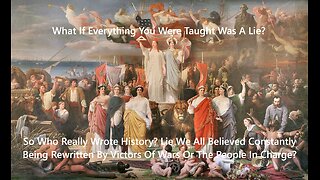 1:50:00
1:50:00
What If Everything You Were Taught Was A Lie?
16 days agoSo Who Really Wrote History? Lie We All Believed Constantly Being Rewritten By Victors Of Wars?
2.68K5 -
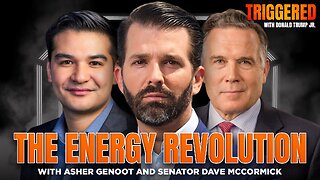 1:12:41
1:12:41
Donald Trump Jr.
4 hours agoFrom Crypto to AI, There's a New American Energy Revival, Interviews with Asher Genoot & Sen McCormick | TRIGGERED Ep.261
124K49 -
 52:11
52:11
ZeeeMedia
7 hours ago"Meaningful Deep State Prosecution" ft. Robert Barnes | Daily Pulse Ep. 73
3.26K5 -
 8:10
8:10
MattMorseTV
4 hours ago $0.39 earnedThey just CAVED.
81516 -
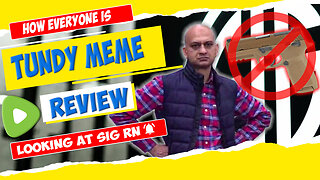 14:55
14:55
Tundra Tactical
4 hours agoTundra's EXPLOSIVE SIG Meme Review
194 -
 LIVE
LIVE
Joker Effect
1 hour agoThe told me to go to H3LL...... well... I am here and causing chaos now. HORROR GAMEPLAY ONLY! :)
387 watching -
 LIVE
LIVE
Mally_Mouse
3 hours agoLet's Hang!! --10K Follower Celebration!!!
61 watching -
 1:01:13
1:01:13
BonginoReport
4 hours agoEpstein’s ‘Madam’ Maxwell Meets With the DOJ - Nightly Scroll w/ Hayley Caronia (Ep.97)
43.2K25 -
 LIVE
LIVE
The Jimmy Dore Show
2 hours agoBrigitte Macron Names Jimmy in Suit Against Candace Owens! Fox News Pushes PURE Israeli Propaganda!
9,797 watching -
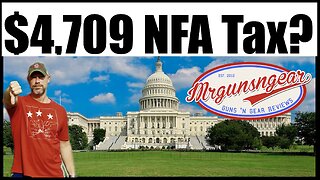 6:31
6:31
Mrgunsngear
5 hours ago $0.37 earnedBreaking: Democrats Attempt To Raise NFA Tax To $4,709!
2.36K13